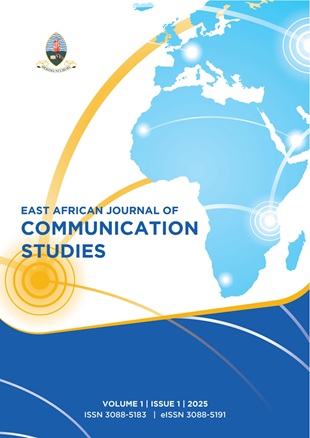
Information For Authors
Instructions to authors
Manuscript Submission Requirements
- Submission Platform: All manuscripts must be submitted electronically via the EAJoCS submission platform: [Insert link]. Submissions via email will not be processed.
- Language: Manuscripts must be in English.
- Originality & Plagiarism: Manuscripts must be original, unpublished, and not under consideration elsewhere. Submissions will undergo plagiarism screening, and manuscripts exceeding a 20% similarity index will be rejected.
- Peer Review Process: EAJoCS follows a double-blind peer review process, ensuring the anonymity of both authors and reviewers. Authors must remove any identifying details from the manuscript and submit a separate title page. The average review period is 10–12 weeks.
Manuscript Preparation
- File Formats: Submissions must be in Microsoft Word (.doc or .docx) format. PDF files are not accepted.
- Manuscript Length: Articles should be between 6,000 and 9,000 words, including references, tables, and figures. Manuscripts exceeding this limit will be returned for revision.
- Document Formatting:
- Heading 1: Bold, Title Case, Size 14
- Heading 2: Bold, Italicized, Title Case, Size 14
- Heading 3: Bold, Title Case, Size 12
- Font: Calisto MT, size 12 (body text).
- Spacing: Single-spaced, including footnotes and references.
- Margins: 1-inch (2.54 cm) on all sides.
- Page Numbers: Centred on each page.
- Headings:
Manuscript Components
- Title Page: Submitted separately and must include:
- Manuscript title (concise, max. 15 words, Size 14, Centred)
- Full names of all authors
- Institutional affiliation (Department, University, City, Country)
- ORCID ID (if applicable)
- Corresponding author’s email
- Abstract: A structured abstract (max. 200 words) summarizing research aims, methodology, key findings, implications, and significance.
- Keywords: Up to five keywords, separated by commas, preferably phrases.
Main Text Structure (they should be numbered):
- Introduction: Clearly define the research problem, objectives, and significance, referencing key literature.
- Literature Review: Critically examine relevant studies, identifying research gaps.
- Methodology: Detail research design, sample size, data collection methods, ethical considerations, and analytical techniques.
- Results: Present findings clearly, using tables and figures where necessary.
- Discussion: Interpret results, linking them to the literature and theoretical framework.
- Conclusion: Summarize key contributions, limitations, and future research directions.
- Acknowledgments: Recognize contributions from individuals or institutions that do not qualify for authorship.
- Conflict of Interest Statement: Disclose any potential conflicts of interest.
Figures, Tables, and Appendices
- Figures and Tables:
- Place them within the text, near their first citation.
- Number sequentially (e.g., Table 1, Figure 1).
- Provide clear titles and legends for all figures.
- Figures must be high-resolution (300 dpi, .png or .jpeg) and editable.
- Tables: Must be in plain text, without color formatting or shading. They should be in APA style.
- Appendices: If necessary, clearly label them (e.g., Appendix A, Appendix B) and reference them in the text.
In-text Citations and References
- Citation Style: Follow APA referencing guidelines.
- DOIs and URLs: Include DOIs for journal articles and working URLs for other sources.

